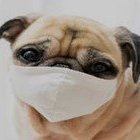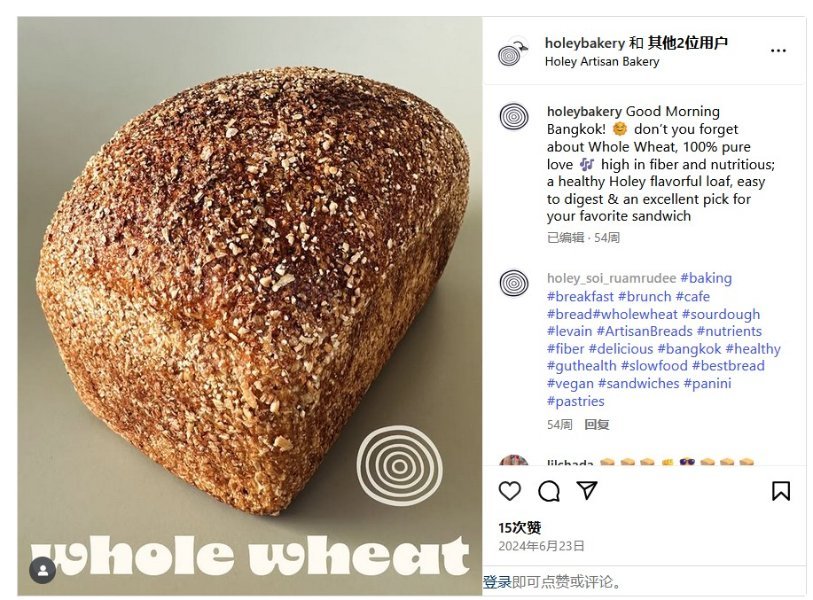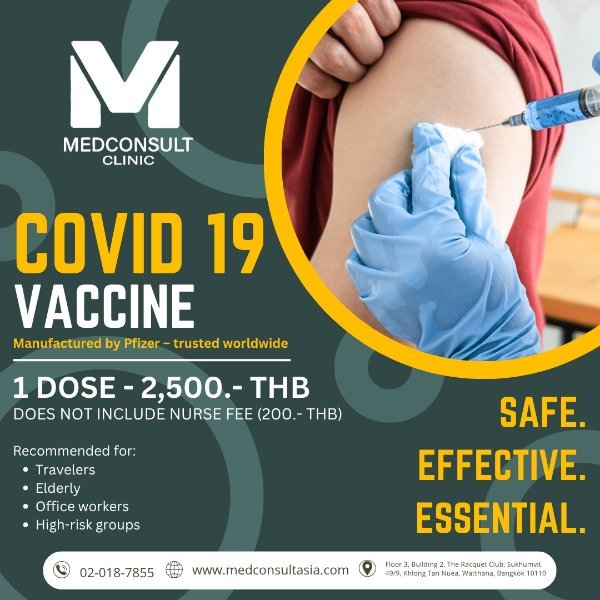-
Posts
37,231 -
Joined
-
Last visited
-
Days Won
6
TallGuyJohninBKK last won the day on May 3 2023
TallGuyJohninBKK had the most liked content!
Profile Information
-
Location
BKK
Previous Fields
-
Location
BKK
Recent Profile Visitors
TallGuyJohninBKK's Achievements
-

ATM fee now 250bt
TallGuyJohninBKK replied to mrmicbkktxl's topic in Jobs, Economy, Banking, Business, Investments
And that's your food / shopping list and budget for the week, right??? j/k 😁 -
Cubic is a commercial, supermarket brand of various packaged breads here in Thailand. A lot of them with a lot of sugar to fit the Thai taste, AFAIK... And made to sit on the supermarket shelves for long periods of time.... Not in the same league as places like Bartels and Holey where they make and sell their freshly made breads on a day to day basis.
-
Yep, Bartel's regular sourdough is terrific, both sold in whole loaves and used as slices on their equally good sandwiches. Unfortunately, while they also make a wholewheat version of their sourdough, it's pretty hard to come by, AFAIK, unless you order it or get to one of their shops relatively early in the day. It's also considerably more expensive than Holey's version at about 250 baht per loaf, which also is actually a mix of rye and whole wheat flours. Last time I talked to them on the subject, Bartels doesn't make their wholewheat sourdough readily available as an alternate bread choice for their sandwiches, even upon request... And, while they do make and sell full loaves of their wholewheat/rye sourdough, those are only in pretty small numbers each day, meaning they're often gone relatively quickly.
-
Also, the chain of farang-founded Holey bakeries in Bangkok have a range of gourmet sourdough breads, including a non-sweet wholewheat version that's quite good. They sell their wholewheat sourdough loaves in their shops and via Grab delivery, with the latter running about 100b per loaf. It's one of our regular purchases for home consumption and tastes great! https://www.holeybakery.cafe/ Their Phed Mak Mak sourdough at the bottom of the list above also is quite delicious, with its combination of sharp cheddar and jalapenos blended in.
-

ATM fee now 250bt
TallGuyJohninBKK replied to mrmicbkktxl's topic in Jobs, Economy, Banking, Business, Investments
Thanks for posting those clips above... Yes, Thailand has long been one of the most expensive ATM fee countries in the world.... in terms of the ATM fees assessed against foreign cards. If you don't mind me asking, what was the source of the charts you posted above? Do you have a weblink for them? Also, be interested to know the timing of them, since they reference AEON ATMs.... and someone above mentioned AEON has withdrawn their ATMs in Thailand. -

ATM fee now 250bt
TallGuyJohninBKK replied to mrmicbkktxl's topic in Jobs, Economy, Banking, Business, Investments
Actually, if you have the right home country bank, its NOT expensive at all... In fact, it can still be among the best way to access foreign funds here, and more economical than international wire transfers..... if you have the correct setup with your home bank. What's the correct setup: 1. a home country bank that charges NO foreign currency exchange fee on foreign purchases or ATM withdrawls, meaning you get the full regular VISA or MC networks rates. 2. a home country bank that fully reimburses you for other banks' foreign ATM charges incurred when using their card, whether those are from a different bank in your home country or a foreign bank when abroad. 3. a home country bank that allows you to make up to $1000 USD in daily ATM withdrawals from their card, meaning you can take advantage of the maximum 30,000 THB withdrawals allowed by Thai Krungsri and TMB ATM machines. But, yes, on the other hand, if your home country bank only allows maximum $500 ATM withdrawals per day, charges you a 3% foreign currency fee on all foreign ATM withdrawals and POS purchases, and does NOT reimburse you for the Thai banks' 250b ATM withdrawal fee for using a foreign card,.... indeed, that's getting screwed. -

ATM fee now 250bt
TallGuyJohninBKK replied to mrmicbkktxl's topic in Jobs, Economy, Banking, Business, Investments
fyi, ATMs belonging to Krungsri/Ayuthaya (the yellow bank) and the former TMB (blue bank) both allow maximum per withdrawal amounts of up to 30,000 baht (the 30K amount is even a preset option on their ATMs' withdrawal screen), assuming the home country debit card you're using has a daily withdrawal amount of $1,000 USD or more. Right now, the 30K THB withdrawal works out to be about $930 USD... But a lot of US bank debit cards have default daily maximum withdrawal amounts of only $500 or less.... But Schwab accounts typically have the $1,000 daily withdrawal limit for their debit cards. PS - The major Thai banks have always set their ATM fees in unison, cartel style. Typically is done via the Thai Bankers Assn., presumably with some coordination/acceptance by the Bank of Thailand. We certainly wouldn't want there to be any actual competition between the different Thai major banks trying to differentiate themselves on the basis of lower (or higher) customer fees!!! 😞 -

Report Bangkok Building Collapse Blamed on Design Flaws, Says PM
TallGuyJohninBKK replied to snoop1130's topic in Bangkok News
I believe the notion that the original building design was flawed and/or the actual construction of the building didn't follow what the original design called for. However, I DON'T believe that all the prior, pretty substantial reporting and testing of the construction materials that found substandard steel and substandard concrete being used was somehow all totally in error. As i recall, some of those findings were made based on testing done and publicly reported by Thai government entities, among others. Especially given that the latest news reporting here and the PM's comments don't give any explanation at all of what happened with the prior public reporting of substandard construction materials being used. Thai police general heading the investigation, BKK Post, June 9: "We have evidence of forged engineering signatures, substandard materials and violations of basic safety standards. The cement and steel used, to give one example, didn't meet the specifications outlined in the contract's terms of reference." [emphasis added] ... There are clearly three core failures: design, supervision and construction materials. All contributed to the building's collapse and the resulting deaths." https://www.bangkokpost.com/thailand/general/3045011/suspect-list-grows-as-state-audit-office-building-probe-widens -

Great food via mail order??
TallGuyJohninBKK replied to 1FinickyOne's topic in Western Food in Thailand
What general area is your home? -

Where to get Covid19 vaccine in Bangkok now ?
TallGuyJohninBKK replied to zenplay's topic in Health and Medicine
Re Medconsult Clinic above: The total price at Mahidol's Thai Travel Clinic near Victory Monument BTS is probably going to be closer to 2,000 baht, assuming you go during their daytime hours, as opposed to their evening hours. For both Medconsult and Thai Travel Clinic, they're typically only keeping limited numbers of COVID vaccine doses on hand at any given time, so best to call ahead to confirm and/or make an appointment for the specific vaccine purpose. -

Transport Bangkok Offers 20-Baht Flat Fare on Electric Trains
TallGuyJohninBKK replied to snoop1130's topic in Bangkok News
Never have truer words been spoken about life in Thailand.... -

Immigration American Man Arrested for 388-Day Overstay in Sri Sa Ket
TallGuyJohninBKK replied to webfact's topic in Isaan News
The common sense point I believe UK was making was... in a time when the country is bemoaning the lack of tourists and their spending to the country, it makes ZERO sense for a landlord of all people to grass out a paying tenant (and thus lose that tenant) to Thai Immigration -- unless there were some broader/underlying issues going on with his tenancy. -
Worth noting, the Executive Summary of the above report, in its introductory comments, recites the following facts regarding the global COVID pandemic: --from December 2019 thru May 2023 when the WHO ended its "public health emergency of international concern" declaration, more than 7 million deaths were reported to the WHO. But the WHO estimates the "true toll" of the pandemic to have caused at least 20 million deaths globally based on excess deaths estimates. --The WHO also estimated the global economic losses associated with the COVID pandemic at $11 trillion to $16 trillion USD, citing the "severe disruption to societies and livelihoods."
-
The WHO report document: Scientific Advisory Group for the Origins of Novel Pathogens (SAGO) Independent assessment of the origins of SARS-CoV-2 Publication Date 27 June 2025 Executive summary ... "While most available and accessible published scientific evidence supports hypothesis #1, zoonotic transmission from animals, possibly from bats or an intermediate host to humans, SAGO is not currently able to conclude exactly when, where and how SARS-CoV-2 first entered the human population. ... Without information to fully assess the nature of the work on coronaviruses in Wuhan laboratories, nor information about the conditions under which this work was done, it is not possible for SAGO to assess whether the first human infection(s) may have resulted due to a research related event or breach in laboratory biosafety. ... To conclude, while a zoonotic origin with spillover from animals to humans is currently considered the best supported hypothesis by the available scientific data, until requests for further information are met or more scientific data becomes available, the origins of SARS-CoV-2 and how it entered the human population will remain inconclusive." (more) https://cdn.who.int/media/docs/default-source/documents/epp/sago/independent-assessment-of-the-origins-of-sars-cov-2-by-sago.pdf?sfvrsn=b0f90ad4_4&download=true Poster's comment - quoting of the report above in a more meaningful, comprehensive way is constrained by the forum's fair use policy limiting the amount of allowed quoted content.





















